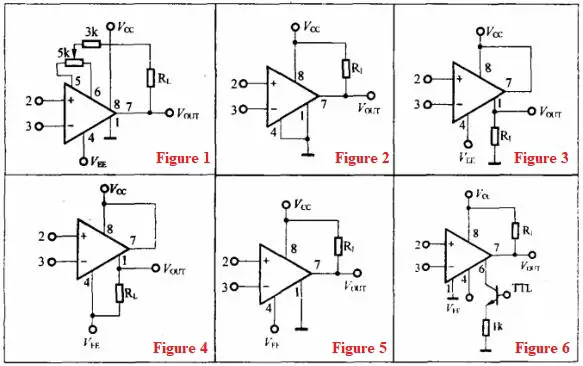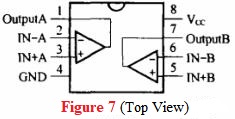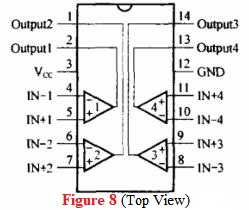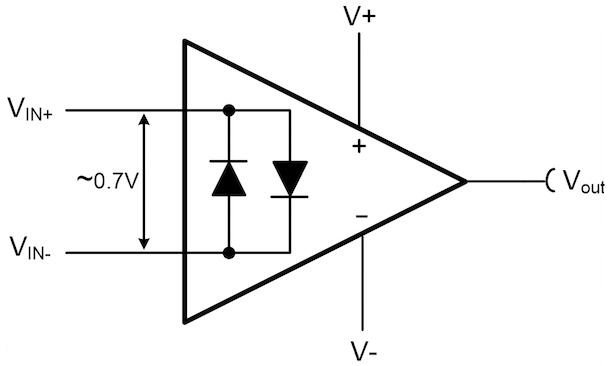In electronics, the comparator is a circuit that makes use of an operational amplifiers with very high gain in its open-loop state, that is, there is no feedback resistor. The op-amp comparator has a positive or negative voltage output by comparing its input voltage against some preset DC reference voltage. The following are some common amplifier comparator circuits to analysis its functions.
LM311 Voltage Comparator is an operational amplifier compatible with DTL, RTL, TTL, or MOS logic level. Its output can switch voltages to 50volts at currents to 50mA with single supply. LM311 IC has been used for voltage comparisons for a long time in some typical circuits. Here introduces them with diagrams.
Basic Circuit of LM311 Comparator

(1) Offset voltage balance (Figure 1)
When adjusting the balance, the two input terminals are grounded, and the 5kΩ potentiometer is adjusted to make the output be the minimum voltage value (close to 0V).
(2) Single power supply (Figure 2)
At this time, VEE is connected to GND. In Figure 1 and Figure 2, the load resistance RL is connected between VCC and Output.
(3) RL is connected between pin 1 and ground (Figure 3)
According to Figure 3, the input polarity is reversed, that is, pin 3 is used as the non-inverting terminal.
(4) RL is connected between pin 1 and VEE (Figure 4). According to Figure 4, the input polarity is reversed.
(5) General connection method of RL for positive and negative power supply (Figure 5).
(6) Comparator connection with strobe (Figure 6).
Connect a transistor to pin 6 for strobe connection. When the base of the transistor is connected to the TTL high level, the comparator is strobed (normal operation); when the base is connected to the low level, the comparator does not work.
LM393 & LM2903

LM393 and LM2903 are a kind of low offset voltage dual comparators, and their pin arrangement is shown in Figure 7. Their main performance is the same, but the temperature range is different: the former is 0~70℃, and the latter is -40℃~105℃. Its main features are: wide operating voltage range, single power supply operating voltage is 2V~36V, dual power supply operating voltage ±(1V~18V); working current is small, typical value is 0.4mA; input bias current typical value is 25nA; the input offset current is 5nA; the input offset voltage is ±1mV (LM2903 is ±2mV); the input common mode voltage range is equal to the power supply voltage; the output voltage is compatible with TTL and CMOS logic levels; the input has ESD protection; the typical voltage gain is 200V/mA; the large signal response time is 300ns.
LM393 & LM2901

The LM393 and LM2901 comparators are quad comparators. The pin arrangement is shown in Figure 8. The main parameters and performance of these two devices are the same, but the temperature range is different: the former is 0~70℃, and the latter is -40℃~105℃. The main features of these two devices: they can be powered by a single power supply or dual power supplies, and the power supply voltage range is wide, ranging from 2V to 36V or ±(1V to 18V). Working current (independent of power supply voltage), typical value is 0.8mA; typical input bias current value is 25nA; typical input offset current value is ±5nA; typical input offset voltage value is 2mV; input common mode voltage range includes low level; The differential input voltage is equal to the power supply voltage; the difference between the saturation voltage and the power supply voltage is low; the output voltage is compatible with TTL and CMOS logic levels; the typical large signal response time is 300ns; the voltage gain is 200V/mV.






